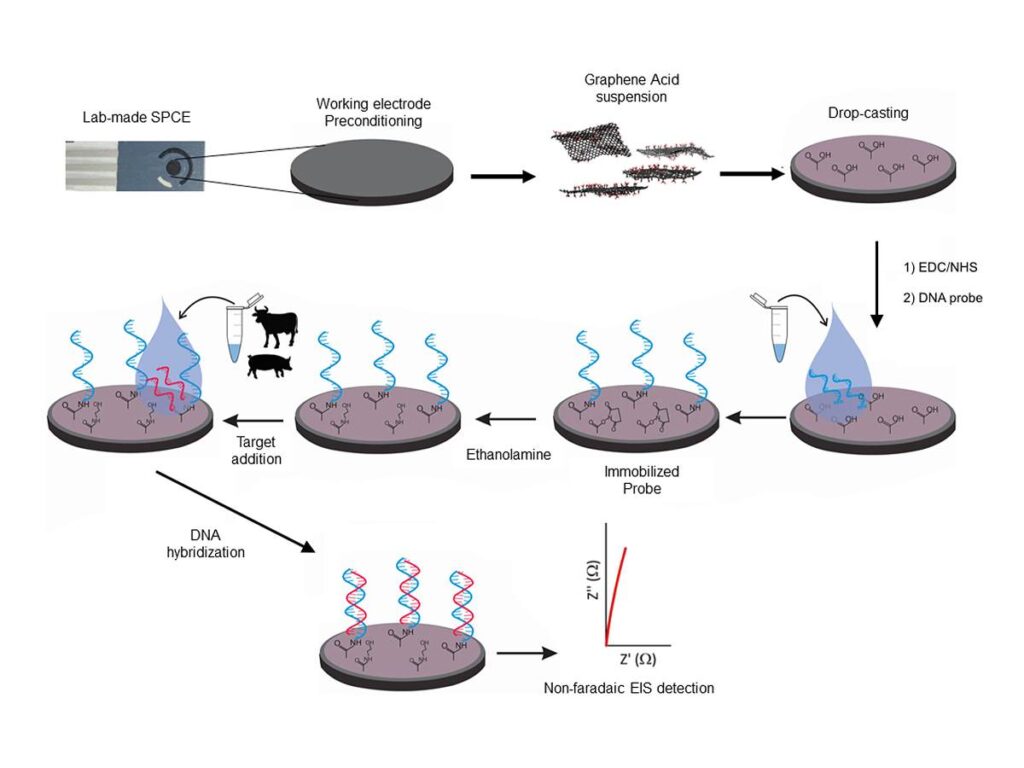Nanomaterial developed in Olomouc helps to detect beef meat adulteration
A reliable, fast, cheap, and easy-to-use diagnostic method for assessing the quality of beef meat was developed by scientists from the Czech Advanced Technology and Research Institute, CATRIN, of Palacký University in collaboration with colleagues from Spain and Brazil. By the method of electrochemical detection alongside using 2D graphene acid prepared in Olomouc, they can detect even small residues of pork meat in beef products. This is important when residues of pork are extremely undesirable for religious, cultural, but also health reasons. The results were published by the renowned journal Biosensors and Bioelectronics.
“The price of beef is high and is expected to continue rising. It therefore may be tempting to add a cheaper variant—pork—to different products. Detecting such an admixture has so far been complex and time-consuming, requiring the use of the PCR method, for example. Scientists have been long devoted to finding a rapid diagnostic tool, but the results have been far from satisfactory. There was no suitable material with the necessary biosensory properties. The problem was solved by our two-dimensional graphene acid, which we recently developed in our workplace,” said one of the authors, Michal Otyepka.
Graphene acid is among very promising graphene derivatives having a wide range of potential applications. “It conducts electrical current, and one important feature is that it shows no toxicity to human cells. Its production is cheap, simple and the acid is very stable. Using it, we have achieved the detection of pork DNA in beef at low concentrations, which is extremely important for potential use in practice. Such detection does not require complex laboratory equipment and takes only about half an hour. Also, the biosensor does not need further complex modifications and, unlike other materials, is very stable—up to several months,” said David Panáček from CATRIN, explaining some of the conclusions of the paper.

Olomouc joined forces with colleagues from the Catalan Institute of Nanoscience and Nanotechnology in Barcelona, led by Arben Merkoçi, who is one of the most world-renowned experts on biosensors using nanomaterials. While CATRIN scientists brought to the joint project their extensive experience of preparing graphene-derived 2D materials, Spanish colleagues capitalized on their expertise in finding specific applications for biosensors. The focus of the research indeed very much resonated with the researchers from the Federal University of Uberlândia in Brazil as this country is one of the world’s most important beef producers.
“I was very happy to work with Prof. Michal Otyepka’s group. Collaboration of teams having complementary expertise is key to developing cutting-edge technologies with potential for real applications, which is what society expects from science,”
Scientists believe that, thanks to its properties, the new pork DNA sensor is very attractive for further development and commercialisation. It also paves the way for the development of sensitive and selective sensory devices for fast, simple, and reliable monitoring of meat purity.


